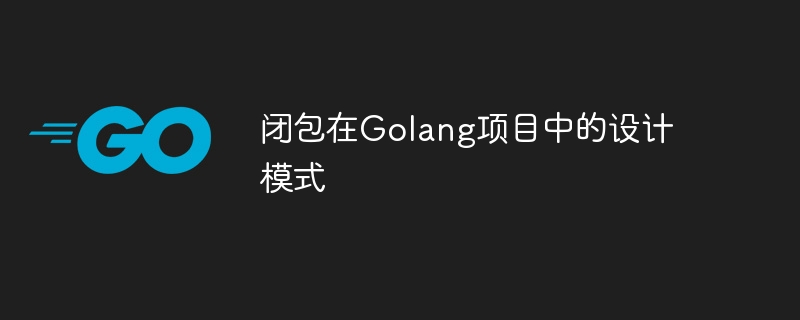
Closure is a technique that binds a function to the variable environment it accesses. In Golang, it is widely used in design patterns such as: Factory pattern: encapsulates factory methods and private data for creating specific types of objects. Strategy pattern: Encapsulates strategy methods and private data for switching between algorithms. Observer pattern: Encapsulates observer methods and private data for subscribing to other object events.

Closed design patterns in Golang projects
Introduction
Closed Packages are a powerful technique for binding together a function and the variables it accesses. In Golang, closures are widely used to improve code readability, reusability and maintainability.
What is closure?
A closure consists of two parts:
When a nested function is called, it not only executes its own code, but also accesses the variable environment to which it belongs. This behavior enables closures to encapsulate private data while allowing external functions to access that data.
Closures in design patterns
Closures can be applied to a variety of design patterns in Golang projects, including:
Practical case: Factory pattern
The following shows an example of the factory pattern implemented using closures:
package main
import (
"fmt"
)
func main() {
// 定义工厂函数,其中闭包封装了创建特定对象所需的私有数据。
createAnimalFactory := func(animalType string) func() Animal {
switch animalType {
case "dog":
return func() Animal { return &Dog{name: "Fido"} }
case "cat":
return func() Animal { return &Cat{name: "Whiskers"} }
default:
return nil
}
}
// 创建不同的动物。
dogFactory := createAnimalFactory("dog")
dog := dogFactory()
fmt.Println(dog)
catFactory := createAnimalFactory("cat")
cat := catFactory()
fmt.Println(cat)
}
// Animal 接口定义了所有动物类型共享的方法。
type Animal interface {
GetName() string
}
// Dog 类型实现了 Animal 接口。
type Dog struct {
name string
}
func (d *Dog) GetName() string {
return d.name
}
// Cat 类型实现了 Animal 接口。
type Cat struct {
name string
}
func (c *Cat) GetName() string {
return c.name
}In this example , the closure saves the animalType variable in its variable environment, allowing the createAnimalFactory function to return different creation functions based on different animalType values.
The above is the detailed content of Closure design patterns in Golang projects. For more information, please follow other related articles on the PHP Chinese website!
 How to define variables in golang
How to define variables in golang
 What are the data conversion methods in golang?
What are the data conversion methods in golang?
 What are the commonly used libraries in golang?
What are the commonly used libraries in golang?
 What is the difference between golang and python
What is the difference between golang and python
 The role of linux operating system
The role of linux operating system
 The difference between currentregion and usedrange
The difference between currentregion and usedrange
 What are the file types
What are the file types
 How to solve the problem that js code cannot run after formatting
How to solve the problem that js code cannot run after formatting




